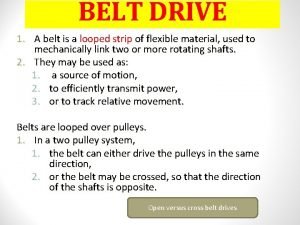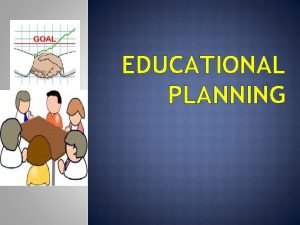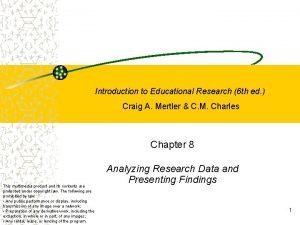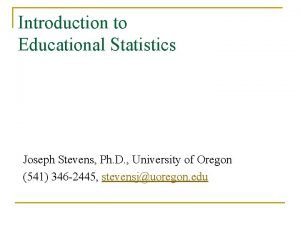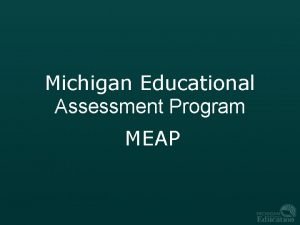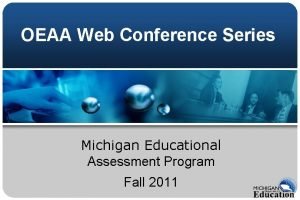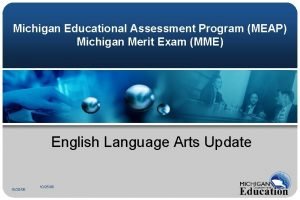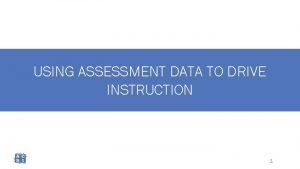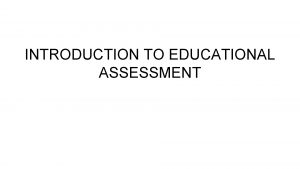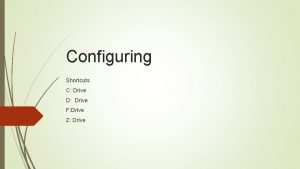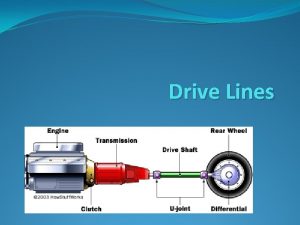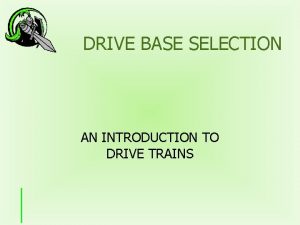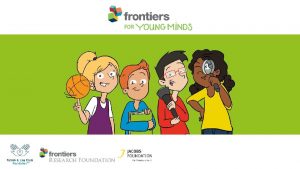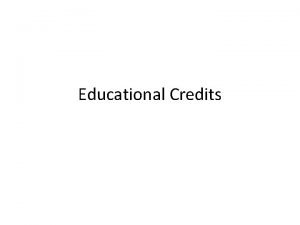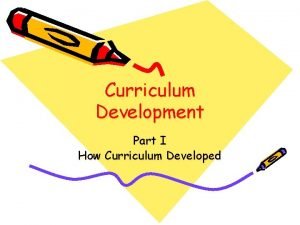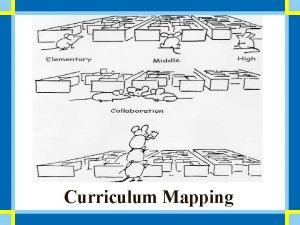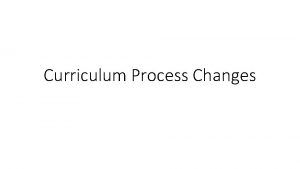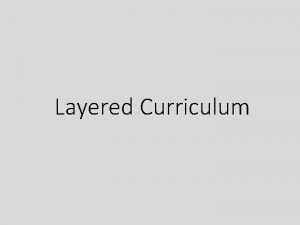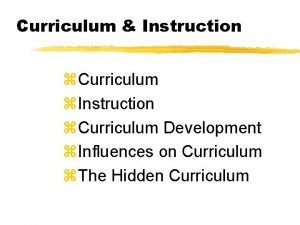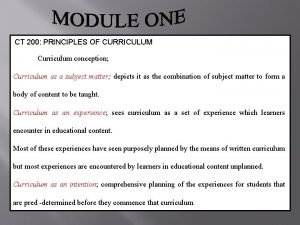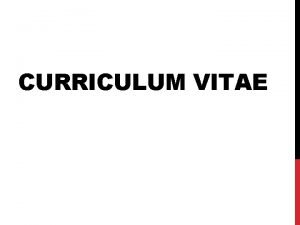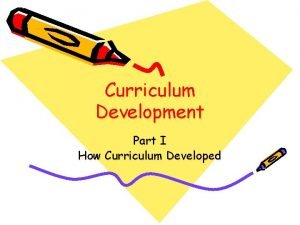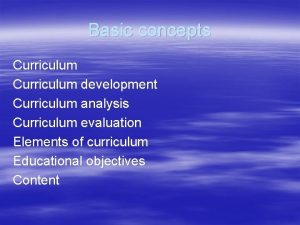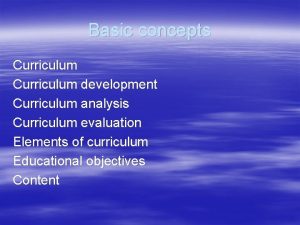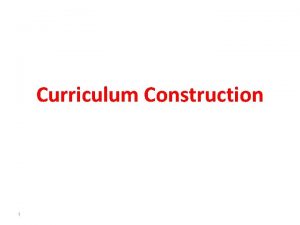INTRODUCTION TO EDUCATIONAL ASSESSMENT Does Assessment drive Curriculum









































- Slides: 41

INTRODUCTION TO EDUCATIONAL ASSESSMENT




Does Assessment drive Curriculum or does Curriculum drive Assessment?


Definition of Assessment A process for obtaining information that is used for making decisions about students, curricula and programs, & ed. policy. (American Federation of Teachers, National Council on Measurement in Education, and National Educational Association, 1990)

Definition of Measurement A procedure for assigning numbers/scores to a specific attribute or characteristic of a person in such a way that the numbers describe the degree to which the person possesses the attribute. (American Federation of Teachers, National Council on Measurement in Education, and National Educational Association, 1990)

Definition of Evaluation The process of making a value judgment about the worth of a student’s product or performance. (American Federation of Teachers, National Council on Measurement in Education, and National Educational Association, 1990)

WHAT IS EDUCATIONAL ASSESSMENT? It’s more than just testing. Other indicators of quality must also be considered. Things like: � Dropout rate � Attendance � College admissions � Surveys: climate, perceptions, attitudes, customer satisfaction, etc.

Types of Educational Decisions

e w o d ? y s h s W sse a

Teaching

“Total Instructional Alignment (TIA) is a process that ensures that we are teaching, what we are assessing and how we are teaching are congruent. ”

The perpetual challenge: Curricular Alignment Written Curriculum What we’re supposed to teach Taught Curriculum What we actually teach Improved Student Achievement Tested Curriculum

School Independent School Dependent


ICE Manners “Teach more than the curriculum that exists and what we evaluate” Geography Cultures Teacher Interests Soft Skills

ICE Brain Compatible Teaching (IC) Lesson Design (ICE) Curriculum Unit Design (ICE) Personal Development (IC) Classroom Management (ICE)

Sharpshooting Farmer “Sharpshooting Farmer”

“Like the farmer, our practice has been we teach, then we see what standards we hit. Because of Common Core’s emphasis on fewer but more focused standards we have to really know our targets before we select activities. ” “Sharpshooting Farmer”

Begin with the end in mind!

Pair-Share: “Discuss Instructional Alignment”

Definitions of Formative & Summative Assessments �Formative assessment: Ungraded learning activities used before or during instruction to aid in planning and diagnosis. Usually short quizzes, daily homework, etc. �Summative assessment: Testing that follows instruction and assesses achievement. Evaluative judgments; Usually accompanied by letter grade. Woolfolk, 2004


Formative Assessments 18 Informal � �Exit Tickets �White Boards �Response Cards �Clickers �Thumbs up/down �Paraphrasing �Group Responses �Think, Pair, Share �Hot Potato �Soccer, Hockey, Basketball �Jeopardy �Graphic Organizers �Gallery Walk �Four Corners Brainstorm others……

CANVA. COM

http: //padlet. com/zachary_smith 4/r 96 jhnw 4200 d

Functions of Assessment �Measure achievement What students know and can do (Summative) �Diagnostic purposes What students need to know and do (Formative) �Determine aptitude Propensity for learning, predicts potential for success

Levels of Assessment Entry-level assessment - Do students possess crucial prerequisite skills and knowledge expected for the learning task or do they already know some of the material to be taught Monitoring of progress - Are students progressing adequately toward achieving the learning goal or do they need re-teaching? Is emphasis on specific instructional components needed in the next series of lessons or units? Summative assessment - Have students achieved the goals defined for the learning task

Guidelines for Selecting & Using Classroom Assessments �Be clear about the learning targets you want to assess. �Be sure the assessment techniques you select match each learning target. �Be sure the selected assessment techniques serve the needs of the learners. �Whenever possible, be sure to use multiple indicators of performance for each learning target. �Be sure that when you interpret the results of assessments you take their limitations into account.

Educational Assessment – Code of Professional Responsibility �Use quality information to make decisions �Give students sufficient information (when, content & abilities assessed, level of performance expected, how will be scored, etc. ) �Score accurately by using appropriate tools �Accommodations for students with disabilities �Communicating results �Confidentiality

Classroom Assessments �Common sense paper-and-pencil tests �True-false �Multiple choice items �Matching �Essay items exercises assessments

http: //quizizz. com



Types of Authentic Assessments �Portfolios �Exhibitions �Demonstrations �Projects �Experiments For Evaluation: Rating Scales Rubrics




Pair Share: How will you implement Performance Based Assessment in your Classroom?
 Https drive google com drive u 1 shared with me
Https drive google com drive u 1 shared with me Slide todoc.com
Slide todoc.com гугл диск
гугл диск Crossed belt drive
Crossed belt drive Https drive google com file d 0b8f5bmoit8kbmx
Https drive google com file d 0b8f5bmoit8kbmx Http drive google com
Http drive google com Difference between chain drive and belt drive
Difference between chain drive and belt drive Mpgu
Mpgu Concept of educational planning
Concept of educational planning Introduction to educational research mertler
Introduction to educational research mertler Introduction to educational statistics
Introduction to educational statistics Meap test michigan
Meap test michigan Bureau of educational assessment
Bureau of educational assessment Oeaa michigan
Oeaa michigan Michigan meap
Michigan meap Using assessment to drive instruction
Using assessment to drive instruction Introduction to the curriculum ideologies
Introduction to the curriculum ideologies Cv chronologique
Cv chronologique Curriculum development process in pakistan introduction
Curriculum development process in pakistan introduction Curriculum drives assessment
Curriculum drives assessment Curriculum assessment and reporting framework
Curriculum assessment and reporting framework 2021 revised curriculum and assessment plans
2021 revised curriculum and assessment plans 2020 revised curriculum and assessment plans
2020 revised curriculum and assessment plans Revised curriculum 2020
Revised curriculum 2020 Revised programme of assessment 2020
Revised programme of assessment 2020 Revised curriculum and assessment plans 2021
Revised curriculum and assessment plans 2021 2020 revised curriculum and assessment plans
2020 revised curriculum and assessment plans Physical features of south africa grade 5
Physical features of south africa grade 5 2020 revised curriculum and assessment plans
2020 revised curriculum and assessment plans 2020 revised curriculum and assessment plans
2020 revised curriculum and assessment plans Qsa essential learnings
Qsa essential learnings 2020 revised curriculum and assessment plans
2020 revised curriculum and assessment plans Revised curriculum 2020
Revised curriculum 2020 2020 revised curriculum and assessment plans
2020 revised curriculum and assessment plans Revised programme of assessment 2020
Revised programme of assessment 2020 2020 revised curriculum and assessment plans grade 6
2020 revised curriculum and assessment plans grade 6 2020 revised curriculum and assessment plans
2020 revised curriculum and assessment plans 2020 revised curriculum and assessment plans
2020 revised curriculum and assessment plans 2020 revised curriculum and assessment plans grade 7
2020 revised curriculum and assessment plans grade 7 2020 revised curriculum and assessment plans grade 6
2020 revised curriculum and assessment plans grade 6 2020 revised curriculum and assessment plans grade 7
2020 revised curriculum and assessment plans grade 7 2020 revised curriculum and assessment plans
2020 revised curriculum and assessment plans



